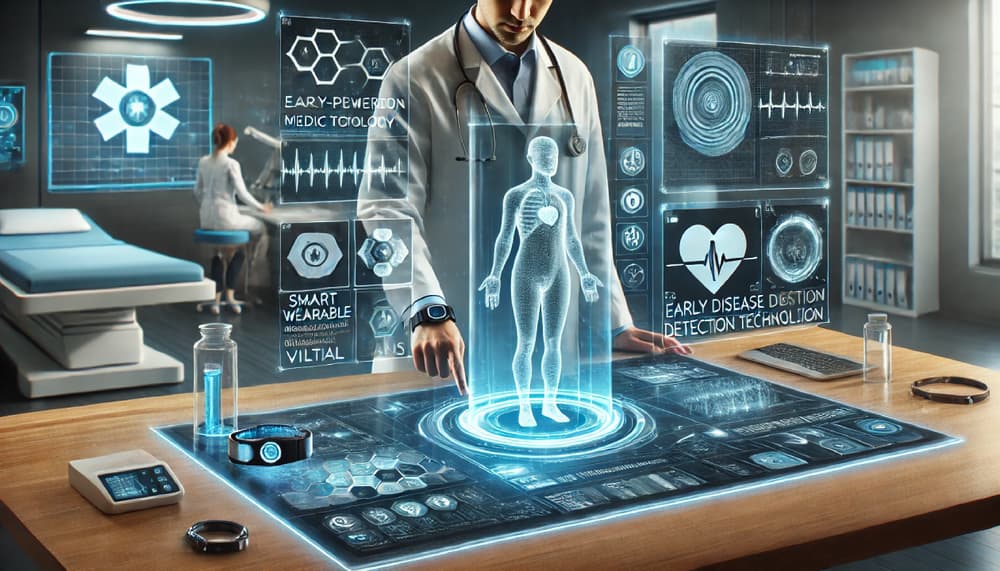AI Scent Detectors are innovative diagnostic tools that analyze odors from breath, sweat, or urine to detect disease-specific biomarkers. Using advanced sensors and machine learning, these devices can identify conditions like cancer, COVID-19, diabetes, and neurological disorders — often before symptoms appear.
AI Scent Detectors for Disease Diagnosis: When Machines Can Smell Illness Before Symptoms Appear
Written by Kashish Rajput

From cancer-sniffing dogs to ancient physicians "smelling" disease, man's body has always released invisible telltale signs — odor-based biomarkers — well before symptoms show. But now with the advent of AI smell sensors, that ancient skill of diagnosis is being redefined as a scientific, scalable, and life-saving technology.
Envision breathing into a sensor that will detect COVID-19, smelling sweat to test for diabetes, or scanning urine vapors for kidney disease – all needle-free, lab-free, and wait-free. That's smell-based diagnostics of the future.
What Are AI Scent Detectors?
AI Scent Detectors are sophisticated diagnostic devices that replicate the human sense of smell but with gas-detecting electronics and machine learning algorithms. They identify volatile organic compounds (VOCs) — the tiny molecules your body emits during metabolic activities — and correlate them with disease-specific patterns.
What They Detect:
Breath → Lung cancer, COVID-19, tuberculosis, liver disease
Sweat → Diabetes, cystic fibrosis, stress disorders
Urine → Kidney problems, bladder infections, metabolic syndromes
Skin emissions → Parkinson's disease, malaria
How It Works: A Breath, A Whiff, A Diagnosis
- Sample Collection: The user blows, sweats, or urinates into a compact sensor-equipped chamber.
- Chemical Signature Mapping: The device detects VOCs and cross-references the chemical "scent" with thousands of disease fingerprint patterns.
- AI Analysis & Pattern Recognition: Trained neural networks quickly match biomarkers that correspond to known diseases.
- Result Delivery: The system delivers a real-time diagnostic report — usually in less than 2 minutes.
Real-Life Applications & Diseases that were Identified
COVID-19 & Flu
→ AI olfactory sensors identified respiratory viruses with >90% precision.
Cancer Diagnosis
→ Lung, breast, and prostate cancers release characteristic smell signatures that can be identified by breath.
Neurodegenerative Diseases
→ Parkinson's disease results in alteration of sebum from the skin that release distinguishable odors.
Diabetes & Metabolic Disorders
→ Elevated ketones and glucose metabolism alter the VOC pattern in urine and sweat.
Digestive & Liver Diseases
→ Bad or sour breath can be a sign of gut flora imbalance, cirrhosis, or ulcers.
Advantages Over Traditional Diagnostics
| Feature | AI Scent Detectors | Traditional Tests |
|---|---|---|
| Speed | Results in 1–3 minutes | Hours to days |
| Invasiveness | Non-invasive (breath/sweat) | Needles, swabs, biopsies |
| Cost | Low-cost portable devices | Expensive lab infrastructure |
| Accessibility | Usable at home or clinics | Requires hospital visit |
| Early Detection | Captures pre-symptom shifts | Detects only after symptoms |
Authentic Pioneers in the Field
- NOZE (Canada): AI scent platform trained on more than 50 million odors, applied for infectious disease detection.
- Aryballe (France): Electronic nose with optical sensors and AI for detecting complex smell patterns.
- Breathonix (Singapore): Conducted 1-minute COVID-19 breath test on clinical trials.
- Caltech & MIT: AI-odor fusion and sniffable nanobots for oncology.
Future Applications
- Ring or Smartwatch-based Wearable e-Noses: Background smell monitoring for cardiac or diabetic emergencies.
- Toilet-Based Disease Screening: Intelligent toilets analyzing urine/gas emissions for infections and cancer.
- AI Breathalyzers in Vehicles: Identify drowsiness, stress, or sickness in drivers to avoid accidents.
- Airport & Border Health Scanners: Real-time breath-based pathogen identification in public areas.
Challenges & Ethical Issues
- Data Privacy: Odor contains extremely intimate metabolic data; it needs to be encrypted and controlled.
- False Positives: Odor profiles overlap between diseases.
- Cultural Bias: Genotypic and dietary differences can influence body smell — AI has to be trained from diverse data.
The Big Picture: Medicine That Smells the Future
AI scent detection can be the ultimate non-invasive diagnostic revolution. It's fast, it's portable, it's affordable — and really intimate. By bringing the intangible to the tangible, this technology can potentially enable millions of individuals to diagnose disease before symptoms, save lives, and reduce healthcare costs worldwide.
In the near future, "Take a deep breath" can be more than soothing your nerves — it can literally save your life.